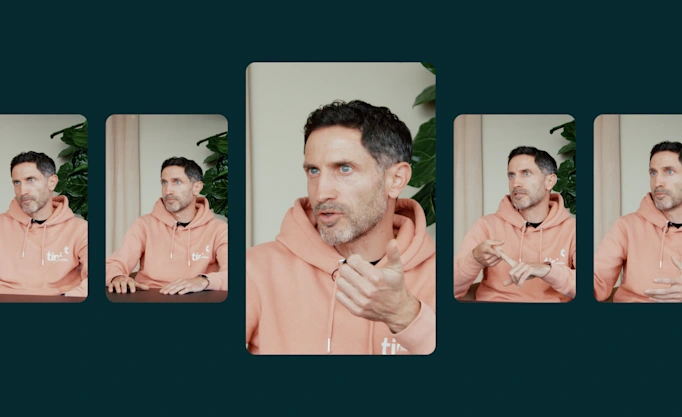How to create a digital-first invoice payment experience with ease

While the invoicing industry is digitalising rapidly on the whole, some analogue and paper-based invoice flows remain. Let’s look at how these traditional processes are holding some merchants and invoice distributors back, and why open banking payments is the ideal, low-effort solution for a digital-first invoice settlement experience.
Many companies continue to use analogue flows to send out invoices, not considering it as a core part of their business.
Adding a digital payment experience to any invoice is easy. There’s no need to change existing processes or incur extra costs.
Tink’s payment technology has already helped over 5 million Swedes with fast, embedded invoice payments.
Today, invoices can be sent or paid through channels such as e-invoice, a digital mailbox like Kivra, direct debit, email (PDF) or a physical (paper-based) invoice. The latter two methods have barely changed for years, if not decades. And yet a significant portion of all invoices are still distributed and settled through these analogue flows, despite them being seemingly forgotten about.
The benefit of moving on from traditional payment processes
The thing is, while they seem outdated for some, a large subset of consumers still prefer these somewhat forgotten flows over digital-first alternatives. ‘If it ain’t broke, don’t fix it,’ right? The downside to this is that in order to pay the invoice, you need to log in to your bank’s website or app, manually copy over the details, and confirm the payment. Receiving your invoices over email or through the post is one thing, but that doesn’t mean you’re content with paying them in a manual, analogue way too.
The main reason many companies continue to use printed invoices is because there’s a perception that it’ll take a lot of hard work to digitalise their entire invoicing operation with little benefit in return. It’s simply not considered a core part of their business, and as a result, it won’t be prioritised. Given that printed invoices can even be a source of extra revenue, the perceived cost of change outweighs the potential return on investment.
What’s clear is that paper- or email-based invoices aren’t going anywhere anytime soon, whether it’s due to consumer preferences or the industry’s resistance to change. Since these types of invoices typically require you to make a manual bank transfer, the end result is that many consumers have to go through an unnecessarily long and arduous process just to pay. It doesn’t have to be this way.
Why open banking payments are easier than you think
Open banking now enables you to easily add a digital payment experience to any invoice, paper-based or otherwise, without having to change existing processes or incur extra costs. A win-win situation.
By simply adding a QR code or clickable link to an invoice, businesses can add seamless and cost-effective account-to-account payments on top of their existing processes. In just a few clicks or taps, 100% of analogue invoicing flows can benefit from a digital payment experience – with users paying directly from their bank account in real time and authenticating in seconds using a fingerprint or Face ID.
Consumers will find it easier to pay their invoices since manual bank transfers are no longer needed and this, in turn, improves the collection rate for businesses. And there’s no need for businesses to overhaul their existing invoicing process, incur extra costs like card interchange fees, or worry about things like storing sensitive card data. The risk of human error is eliminated too, since the invoice details are prefilled and consumers don’t need to manually enter any information.
Unlock a faster, digital-first payments experience
Invoice settlement is an ideal use case for open banking payments and one where adoption is growing rapidly. Over 5 million Swedes are already able to pay their invoices using Tink’s payment technology through our customer Kivra, and we recently teamed up with invoice platform Zervant to simplify payments for over 100,000 SMEs across Europe. For merchants and invoice distributors still manually entering invoice data, this same payment journey can be easily added to existing analogue flows.
A digital-first invoice payment experience
Kivra customer flow
Open banking can help bring a frictionless, embedded payment experience to invoicing, regardless of how the invoice itself is sent. Tink customers using our invoice settlement solution have increased their conversion rates while simplifying operations with low-cost, digital-first payments.
Want to know more about how Tink can improve the invoicing experience? Get in touch.
More in Open banking

2025-11-20
3 min read
Tink powers the UK’s first cVRP transaction with Visa A2A
In partnership with Visa, Kroo Bank, and Utilita, we’ve just helped demonstrate the UK’s first commercial variable recurring payment (cVRP) using the Visa A2A solution – and it’s a big step forward for how people make regular payments.
Read more

2025-06-09
11 min read
The case for “Pay by Bank” as a global term
Thomas Gmelch argues that "Pay by Bank" should be adopted as a standard term for open banking-powered account-to-account payments to reduce confusion, build trust, and boost adoption across the industry.
Read more

2025-06-02
3 min read
Tink joins Visa A2A – what it means for Pay by Bank and VRP
Visa A2A brings an enhanced framework to Pay by Bank and variable recurring payments (VRP) in the UK, and Tink is excited to be one of the first members of this new solution.
Read more
Get started with Tink
Contact our team to learn more about what we can help you build – or create an account to get started right away.





